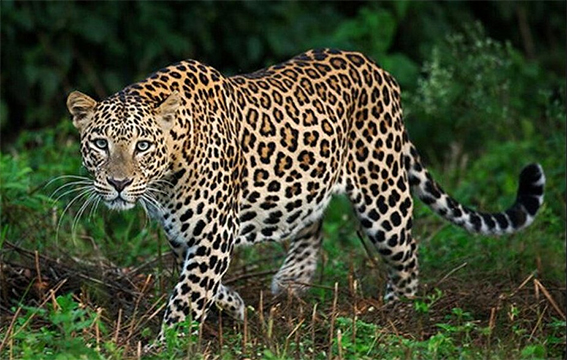Important Facts For Prelims
Leopard Sterilisation
- 15 Sep 2023
- 4 min read
Why in News?
Recently, the Maharashtra Government has decided to sterilize Leopards for the sustainable management of population for leopards in the State.
- Gujarat's forest department has also proposed sterilisation of leopards, especially in and around Gir National Park.
What is the Need for Sterilizing Leopards and Concerns?
- Need:
- In 2019-20 alone, Maharashtra saw 58 human deaths due to leopards—over half the 97 casualties in 2010-18.
- Maharashtra has decided to sterilize leopards as a response to the increasing leopard-human conflicts, rising leopard population, and the need to protect both leopards and human communities.
- The proposed sterilisation program aims to address these challenges while complying with environmental conservation laws and regulations.
- Concerns:
- Concerns about the sterilisation of leopards include doubts about its effectiveness, the need for comprehensive scientific research, veterinary skill development, potential stress on leopards, challenges with traditional methods, and alternative contraception options.
- There is also an emphasis on addressing conflicts and gaining community support for conservation efforts.
What are the Key Points Related to Leopards?
- Scientific Name: Panthera pardus
- About:
- The leopard is the smallest of the Big Cats (Of genus Panthera namely the Tiger, Lion, Jaguar, Leopard, and Snow Leopard), and known for its ability to adapt in a variety of habitats.
- A nocturnal animal, the leopard hunts by night.
- It feeds on smaller species of herbivores found in its range, such as the chital, hog deer and wild boar.
- Melanism is a common occurrence in leopards, wherein the entire skin of the animal is black in colour, including its spots.
- A melanistic leopard is often called black panther and mistakenly thought to be a different species.
- Habitat:
- It occurs in a wide range in sub-Saharan Africa, in small parts of Western and Central Asia, on the Indian subcontinent to Southeast and East Asia.
- The Indian leopard (Panthera pardus fusca) is a leopard widely distributed on the Indian subcontinent.
- It occurs in a wide range in sub-Saharan Africa, in small parts of Western and Central Asia, on the Indian subcontinent to Southeast and East Asia.
- Population in India:
- As per a recent report ‘Status of leopards in India, 2018’ released by the Ministry of Environment, Forest and Climate Change, there has been a “60% increase in the population count of leopards in India from 2014 estimates’’.
- The 2014 estimates placed the population of leopards at nearly 8,000 which has increased to 12,852.
- The largest number of leopards have been estimated in Madhya Pradesh (3,421) followed by Karnataka (1,783) and Maharashtra (1,690).
- As per a recent report ‘Status of leopards in India, 2018’ released by the Ministry of Environment, Forest and Climate Change, there has been a “60% increase in the population count of leopards in India from 2014 estimates’’.
- Threats:
- Poaching for the illegal trade of skins and body parts.
- Habitat loss and fragmentation
- Human-Leopard conflict
- Conservation Status:
- IUCN Red List: Vulnerable
- CITES: Appendix-I
- Indian Wildlife (Protection) Act, 1972: Schedule-I
UPSC Civil Services Exam, Previous Year Questions (PYQ)
Q. Consider the following: (2012)
- Black-necked crane
- Cheetah
- Flying squirrel
- Snow leopard
Which of the above are naturally found in India?
(a) 1, 2 and 3 only
(b) 1, 3 and 4 only
(c) 2 and 4 only
(d) 1, 2, 3 and 4
Ans: (b)







